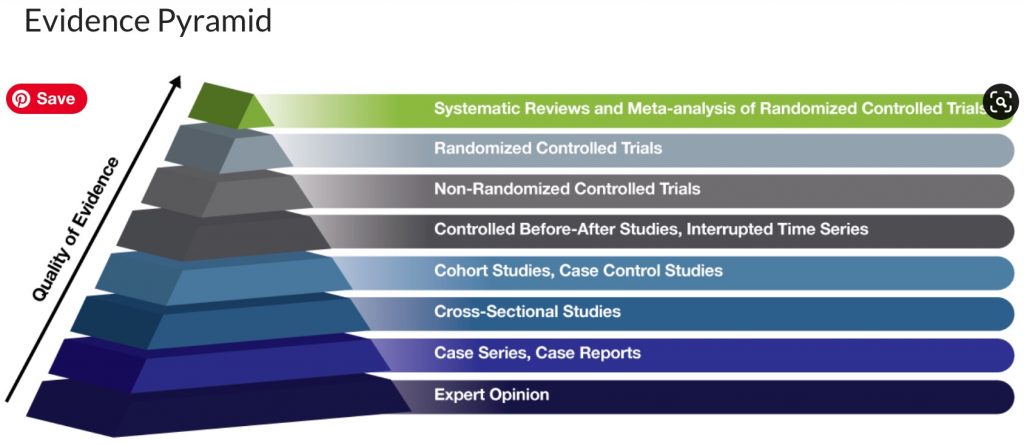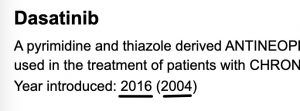Step 6-8. Run Your Search and Refine
Step 6. Run Your Search
- Click the “Search PubMed” button.
How Many Results has Your Search Retrieved?
This search retrieved a32 results when the tutorial was last updated on July 10, 2024.
32 is the number of results when no filters are used and when using the subheading with the heading for the disease (CML) that are suggested by the search template. You will have more results if you didn’t use subheadings. Subheadings should not be used with the MeSH headings for the “resistance” concept.
Step 7. Apply Filters
English and Humans, if desired
- Is the “Filters” panel present on the left-hand side of your PubMed window. If not, click on the “Filters” button above the result list.
- If desired, apply “English” and “Humans” filters. You may have to use the “Additional Filters” button to choose the filters you want to show before you can apply these filters.
Article Types
Your clinical question asked for evidence. When you are asked for evidence it’s reasonable to concentrate on best evidence. An evidence pyramid is shown below. You may need to widen your instruction window temporarily to see the text more clearly. As the pyramid shows, systematic reviews, meta-analyses, and randomized controlled trials are at the top of the pyramid. This means these are the type of studies (if well-done) that have the least risk of being biased or providing misleading information. They are given the most weight by those deciding on best practice guidelines.

- Look at the available “Article Type” filters. Are “randomized controlled trials”, “systematic reviews”, “meta-analysis”, and “clinical trials” filters all available? If not, use the “Additional Filters” button to select and “show” these filters.
Perhaps you’re wondering why you should show the “clinical trials” filter. You will need the “Clinical trial” filter if the other filters don’t retrieve much in the way of “best evidence.”
- Once the filters are present in the “Article Type” filter list, select the “meta-analysis”, “randomized controlled trial”, and “systematic review” filters. When this tutorial was last updated, there was a single systematic review. I had to click the browser’s back button to get back to the filter list and apply the meta-analysis filter. I had to click the browser back button again to get back to the filter list and apply the “randomized controlled trial” filter.
- There are so few results with the “best evidence” filters that it will be necessary to include lesser evidence, add the “Clinical Trial” filter.
Consider removing subheadings — especially the drug heading’s subheading
The purpose of the final search assignment is to teach you how to perform exhaustive searches. Exhaustive searches seek to find all the available evidence. Exhaustive searches are needed when you are writing a systematic review. Relatively exhaustive searches are also needed by authors of practice guidelines and pharmacists considering adding drugs to a hospital’s formulary.
When performing an exhaustive search, its worth trying the search without subheadings. It’s especially important to try removing the subheadings used with drug headings if the drug heading has two introduction dates. An irrelevant drug heading is shown below just to show what the two introduction dates would look like.

For drug headings, the earlier introduction date usually represents the year when a supplementary concept for the drug was introduced. Supplementary concepts don’t have subheadings. The later date represents the date when the drug’s new MeSH heading (without subheadings) was added to all the articles previously indexed with the drug’s supplementary concept. Articles indexed after the second date may be indexed with the drug heading in combination with subheadings.
Do you have enough results to support writing of a systematic review?
When you write a systematic review or formulary monograph for your PHPR 622 project as a P3, you will need at least 3 articles that meet your inclusion criteria.
After use of the “clinical trials” filter, the MeSH search you have completed today should have retrieved enough relevant articles for a systematic review.
